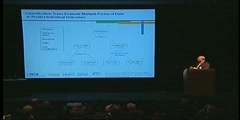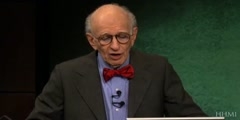Lec 10 -Year 2008 - Debt Markets: Term Structure
Debt Markets: Term Structure Financial Markets (ECON 252) -Year 2008 The markets for debt, both public and private far exceed the entire stock market in value and importance. The U.S. Treasury issues debt of various maturities through auctions, which are open only to authorized buyers. Corporations issue debt with investment banks as intermediaries. The interest rates are not set by the Treasury, the corporations or the investment bankers, but are determined by the market, reflecting economic forces about which there are a number of theories. The real and nominal rates and the coupons of a bond determine its price in the market. The term structure, which is the plot of yield-to-maturity against time-to-maturity indicates the value of time for points in the future. Forward rates are the future spot rates that can be calculated using today's bond prices. Finally, indexed bonds, which are indexed to inflation, offer the safest asset of all and their price reveals a fundamental economic indicator, the real interest rate. 00:00 - Chapter 1. Introduction 04:25 - Chapter 2. The Discount and Investment Rates 19:12 - Chapter 3. The Bid-Ask Spread and Murdoch's Wall Street Journal 29:17 - Chapter 4. Defining Bonds and the Pricing Formula 39:38 - Chapter 5. Derivation of the Term Structure of Interest Rates 52:34 - Chapter 6. Lord John Hicks's Forward Rates: Derivation and Calculations 01:06:09 - Chapter 7. Inflation and Interest Rates Complete course materials are available at the Open Yale Courses website: http://open.yale.edu/courses This course was recorded in Spring 2008.
Video is embedded from external source so embedding is not available.
Video is embedded from external source so download is not available.
Channels: Finance
Tags: annualized rate ask bid bid-ask spread bonds broker discount fixed incomes indexed investment term structure Treasury bills
Uploaded by: yalefinanmarkets ( Send Message ) on 20-08-2012.
Duration: 70m 45s
Here is the next lecture for this course
Lec 8 - Theory of Debt, Its Proper Role, ...
01:15:17 | 2906 viewsLec 35 - Understanding Molecular Structur ...
48:42 | 3175 viewsBeta sheet: secondary structure of protein
01:08 | 15056 viewsAtomic Structure and Chemical Bonding
01:54 | 10915 viewsLec 27 - Communicating Molecular Structur ...
51:36 | 2635 viewsChemical Science - Covalent Bonds - Lectu ...
47:12 | 14237 viewsLec 23 - Valence Theory and Constitutiona ...
48:47 | 3017 viewsLec 24 - Determining Chemical Structure b ...
50:15 | 2872 viewsStructure of DNA
01:19 | 43587 viewsDioscovery of DNA structure: 50 years cel ...
27:10 | 14859 viewsThe Structure of HIV
00:52 | 13654 viewsAplysia long-term memory and its molecula ...
01:38 | 6457 viewsAplysia short-term memory and its molecul ...
02:30 | 8666 viewsShort-term memory and molecular basis of ...
01:27 | 7698 viewsLong-term memory and molecular basis of l ...
00:57 | 6689 viewsNo content is added to this lecture.
This video is a part of a lecture series from of Yale
Lecture list for this course
Lec 1-Year 2008 Finance and Insurance as Powerful Forces in Our
Lec 2 -Year 2008 - The Universal Principle of Risk Management: Pooling
Lec 3 -Year 2008 - Technology and Invention in Finance
Lec 4 -Year 2008 - Portfolio Diversification and Supporting Financial
Lec 5 -Year 2008 - Insurance: The Archetypal Risk Management
Lec 6 -Year 2008 - Efficient Markets vs. Excess Volatility
Lec 7 -Year 2008 - Behavioral Finance: The Role of Psychology
Lec 8 -Year 2008 - Human Foibles, Fraud, Manipulation, and Regulation
Lec 9 -Year 2008 - Guest Lecture by David Swensen
Lec 12 -Year 2008 - Real Estate Finance and its Vulnerability to Crisis
Lec 13 -Year 2008 - Banking: Successes and Failures
Lec 14 -Year 2008 - Guest Lecture by Andrew Redleaf
Lec 15 -Year 2008 - Guest Lecture by Carl Icahn
Lec 16 -Year 2008 - The Evolution and Perfection of Monetary Policy
Lec 17 -Year 2008 - Investment Banking and Secondary Markets
Lec 18 -Year 2008 - Professional Money Managers and Their Influence
Lec 19 -Year 2008 - Brokerage, ECNs, etc.
Lec 20 -Year 2008 - Guest Lecture by Stephen Schwarzman
Lec 21 -Year 2008 - Forwards and Futures
Lec 22 -Year 2008 - Stock Index, Oil and Other Futures Markets
Lec 23 -Year 2008 - Options Markets
Lec 24 -Year 2008 - Making It Work for Real People: The Democratization
Lec 25 -Year 2008 - Learning from and Responding to Financial Crisis I
Lec 26 -Year 2008 Learning from and Responding to Financial Crisis II
















